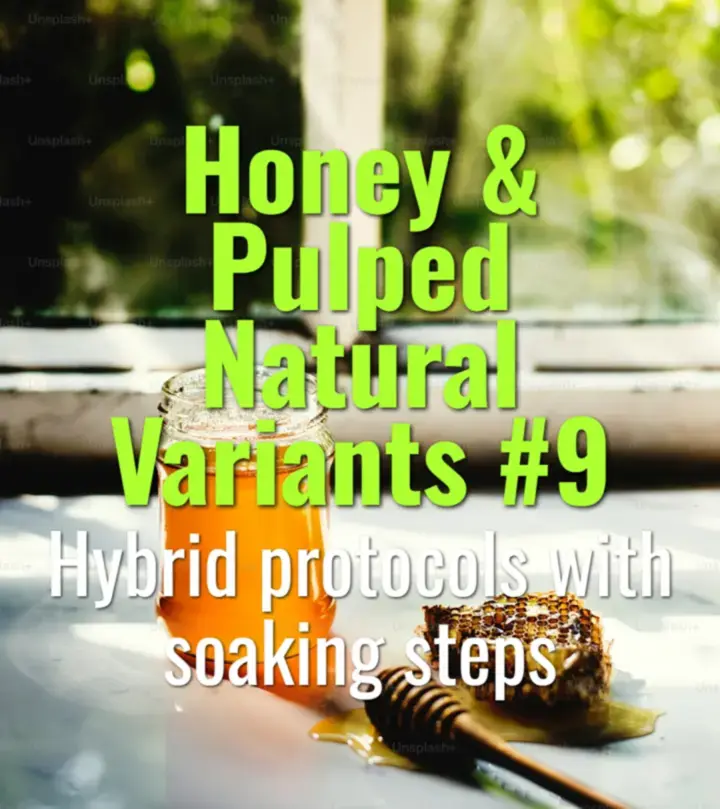Hybrid protocols with soaking steps
This topic explains hybrid honey processing protocols that incorporate soaking steps, how they blend aspects of washed and honey methods, and their impacts on flavor, cleanliness, and market differentiation.
- Coffee Basics Nerds
- 2 min read
Article 9 of 12 in Honey & Pulped Natural Variants/

What Are Hybrid Honey Protocols?
- In standard honey processing, beans are depulped with mucilage left on and dried directly.
- Hybrid methods introduce a short soaking phase (like washed coffee) before or after drying starts.
- Aim: Combine clarity of washed with sweetness and body of honey.
Types of Hybrid Protocols
1. Post-Pulping Soak
- Beans soaked briefly (4–12 hours) after pulping to reduce surface mucilage.
- Then dried as yellow or red honey.
- Effect: Cleaner flavors, reduced risk of over-fermentation.
2. Mid-Drying Soak
- Beans partially dried, then soaked in clean water before drying continues.
- Effect: Stabilizes fermentation, enhances uniformity.
3. Double Processed Honey
- Combines mucilage retention with multiple soak/dry cycles.
- Effect: Creates unique, layered flavor complexity.
Flavor Outcomes
- Increased clarity: Soaking removes excess sugars that cause muddiness.
- Balanced sweetness: Still sweeter than fully washed, but cleaner than black/red honey.
- Improved storage stability: Lower risk of mold or uncontrolled fermentation.
Risks and Challenges
- Requires clean water—may not be viable in water-scarce regions.
- Additional labor and infrastructure (tanks, water management).
- Risk of over-soaking, which can strip flavor precursors.
Market Appeal
- Specialty buyers value hybrids for distinct, experimental profiles.
- Producers can differentiate lots and command premiums.
- Often marketed as innovation-driven micro-lots.
Lasting Importance
Hybrid honey protocols with soaking steps represent a fusion of tradition and innovation. They allow farmers to create unique cup profiles while balancing cleanliness, sweetness, and risk—broadening the flavor spectrum available to specialty coffee markets.
You might also like:
- Tags:
- Lasting Importance
- Specialty Coffee
- Flavor Outcomes
- Specialty Buyers
- Sweetness Body
- Flavor Complexity
- Cup Profiles
- Challenges Requires
- Clean Water
- Micro Lots
- Risk Mold
- Honey Processing
- Reduced Risk
- Balanced Sweetness
- Red Honey
- Water Management
- Yellow Red
- Flavor Precursors
- Flavors Reduced
- Washed Coffee
- Mucilage Retention
- Coffee Markets
- Hybrid Methods